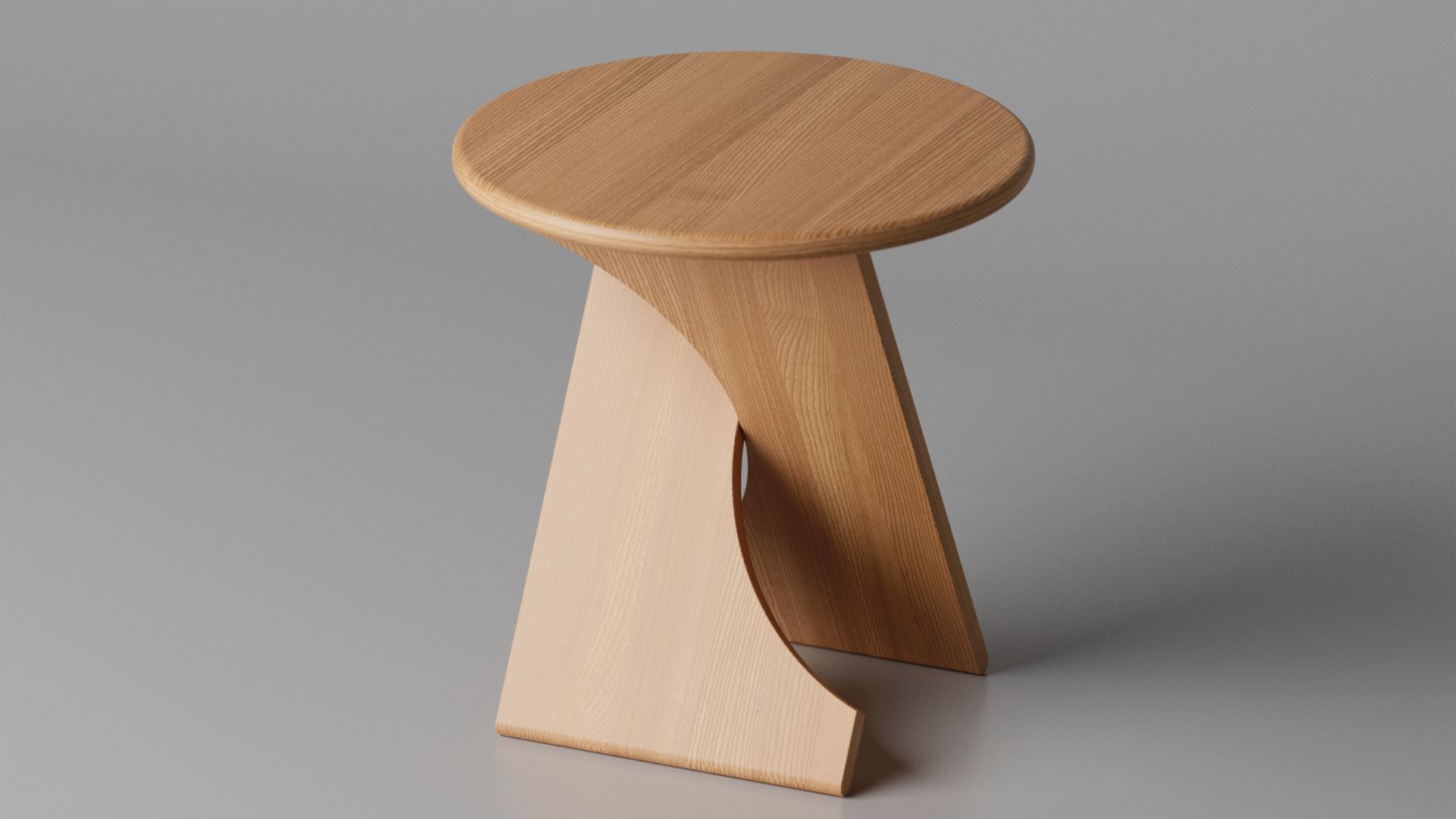Once again, with this project, the German designer Aktay demonstrates his knack for providing visually pleasing and thoughtfully designed solutions

The concept behind the Slide table, designed by Deniz Aktay, is to minimize waste by cutting it from a single sheet of wood, making it ideal for flat packaging. By utilizing the round tabletop and the remaining wood for the two crossed, interlaced table legs, every part of the wood sheet is utilized, resulting in a captivating shape.
The legs effortlessly “slide” together, and the tabletop is added, creating a straightforward assembly process. The design boasts timeless appeal with its elegant organic contours.
Aktay has made a name for himself through his minimalist creations, capturing the hearts of his Instagram community. He possesses a remarkable talent for revitalizing the design of everyday objects, particularly in the realm of furniture, infusing them with a unique twist.

This skill has established him as a go-to reference not only for designers but also for the growing number of companies he collaborates with.
With the Slide Table project, Aktay showcases his ability to deliver aesthetically satisfying and conceptually intelligent solutions once again. We asked him a few questions to gain a deeper understanding of how he developed the idea and how he set the requirements for projects of this nature.
Enjoy reading the interview!
The idea was submitted for the Bolia Design Awards. What were the participation criteria that defined your entry?
Deniz Aktay:
“One of the primary requirements for the yearly Bolia Design Awards is to emphasize sustainability. According to Bolia’s brief, they strive to create designs that possess a distinct, long-lasting, and timeless identity, rather than being swayed by fleeting trends. Hence, sustainability and the use of certified materials are crucial aspects of this year’s Bolia Design Awards.
In addition to design aesthetics, creativity, and functionality, a sustainable approach holds equal importance. The Award even recognizes a sustainable design separately through the “Circularity Prize” within the Bolia Design Awards.”

Could you explain the creative process behind defining this shape, considering the product’s functionality and sustainability features?
Deniz Aktay:
“Wood is a material I highly appreciate, especially when sourced sustainably, such as FSC-certified wood. Considering this, I aimed to enhance its sustainability further. My approach involved minimizing the amount of wood used in my design and reducing energy consumption during the production process.
To achieve this, I devised a method where all the necessary pieces for the design are cut from a single sheet, generating minimal offcuts. This can be accomplished with just a few machine-made cuts. The main challenge I faced was creating a design that is both innovative and aesthetically pleasing.
Moreover, due to its origin from a single sheet, the table is well-suited for flat packaging, contributing to its sustainability.”

From your perspective, what makes a product sustainable? What factors should be taken into consideration?
Deniz Aktay:
“In my view, the key factor is incorporating recycled or sustainably-sourced materials into your products. Regardless of the material chosen, I believe that minimizing decorative elements and using the least amount of material possible not only enhances the aesthetics of the design but also promotes a highly sustainable design approach.
Additionally, I believe it is essential for customers to have the ability to assemble, repair, or replace parts of their everyday products. This not only strengthens the connection between the customer and the product but also fosters a greater appreciation for the value of the products.”

Your designs work with familiar shapes but often have a twist that makes them unique. What does it take to conceive this type of solution? What goals do you set for yourself at the beginning of each project?
Deniz Aktay:
“When I observe designs, I often come across those that possess either an aesthetically pleasing appearance or a unique twist. However, when a designer manages to encompass both, I become truly exhilarated, reminiscent of a child captivated by something extraordinary. Consequently, in my designs, I consistently strive to incorporate both of these aspects.
This endeavor presents a considerable challenge since an excessive emphasis on one can overshadow the other, and vice versa. Hence, it becomes crucial to find the perfect equilibrium, where both elements harmoniously coexist.”
Read more on Archup:


 العربية
العربية